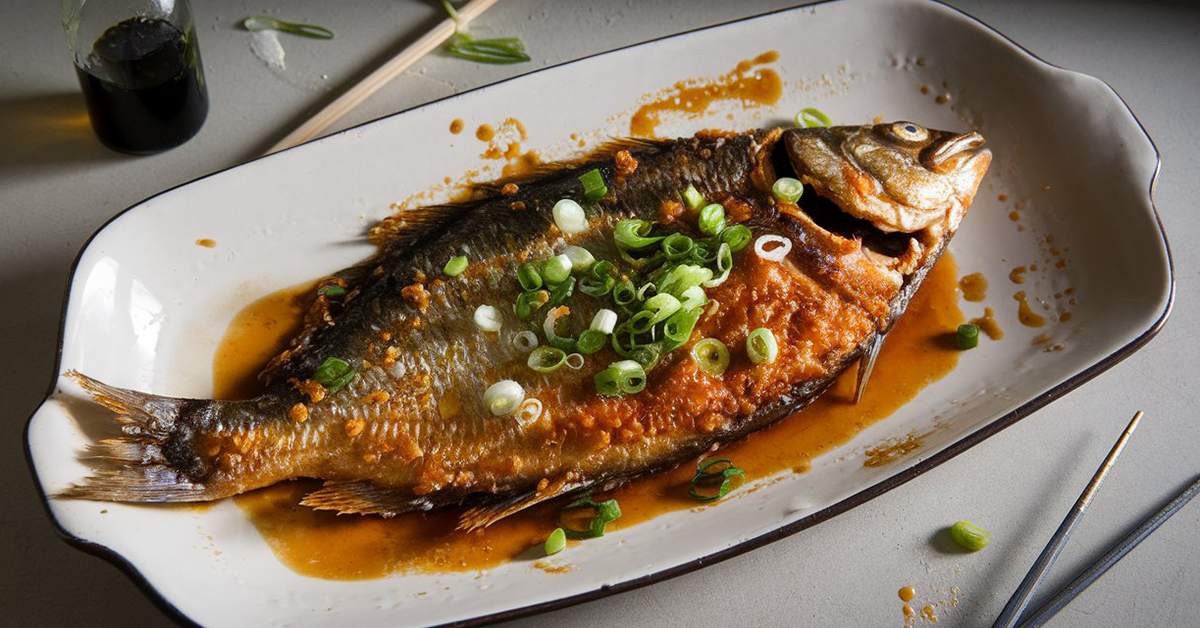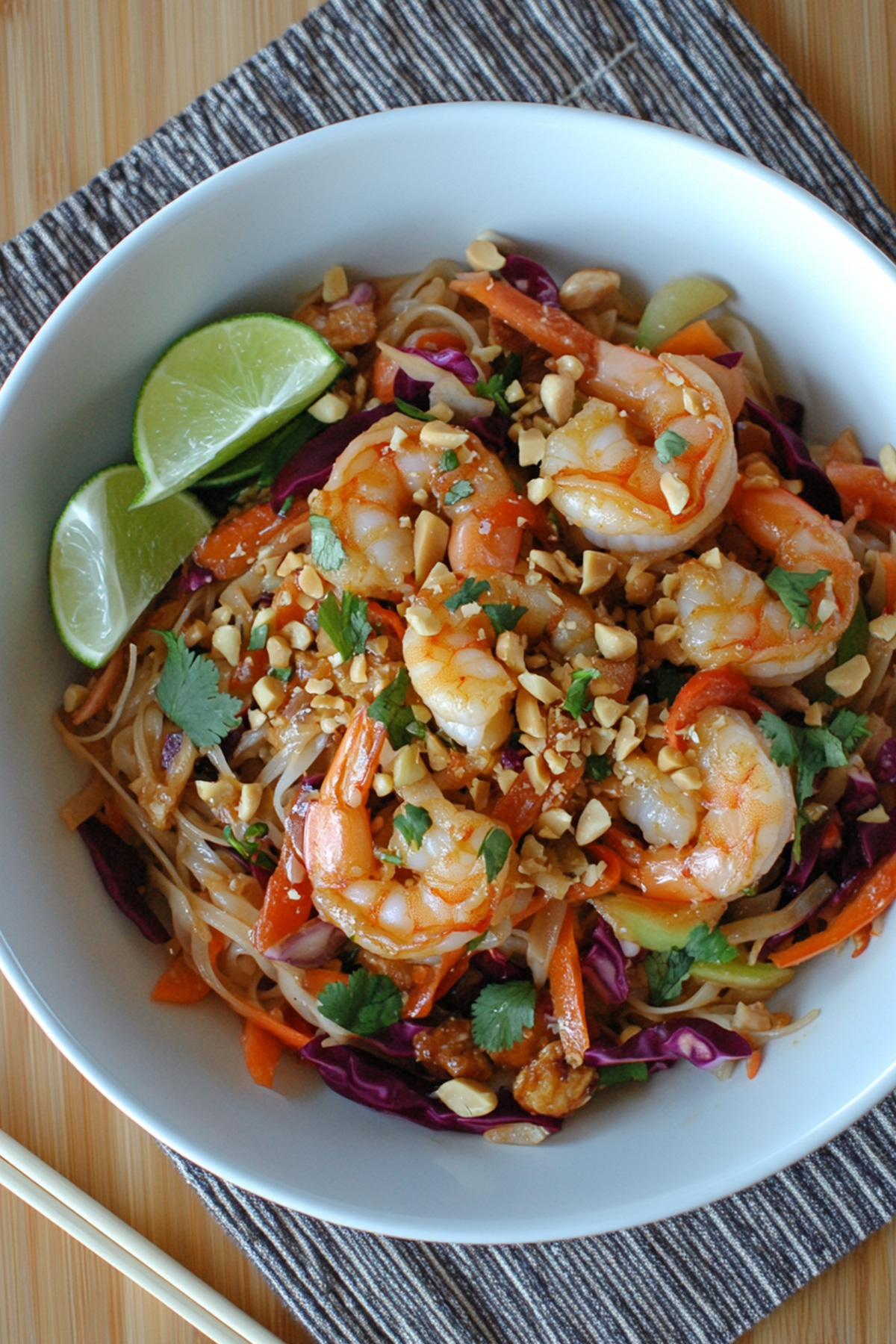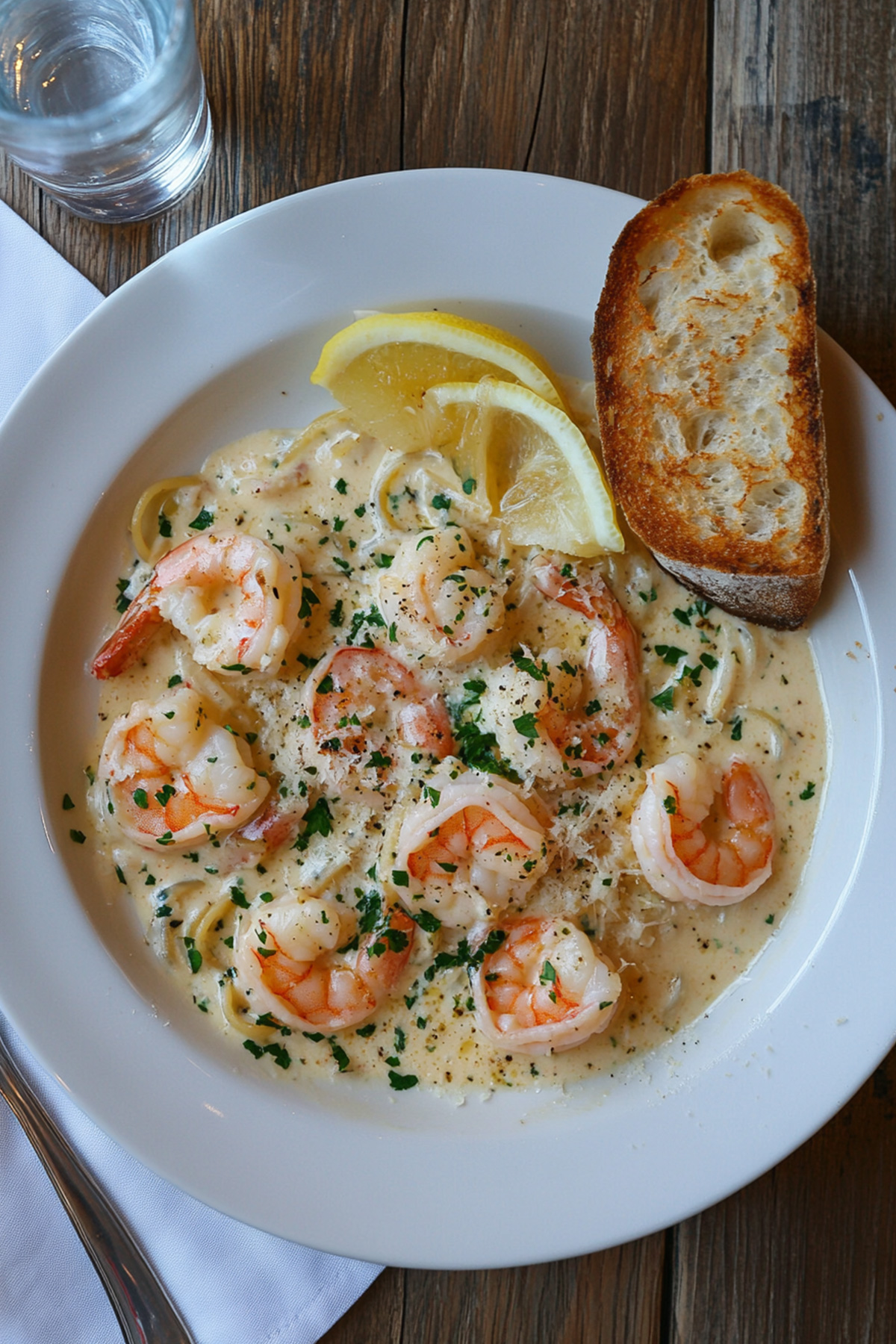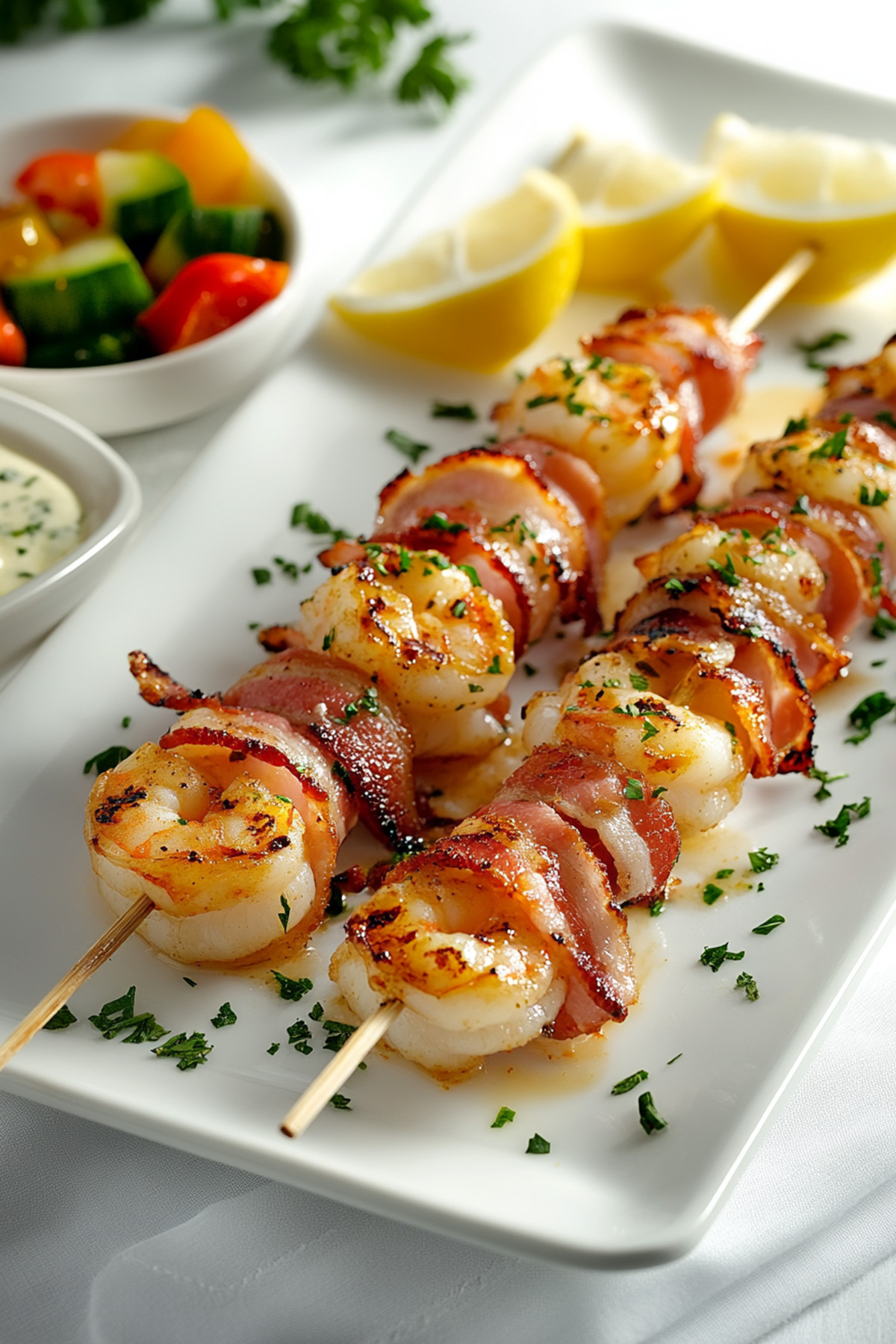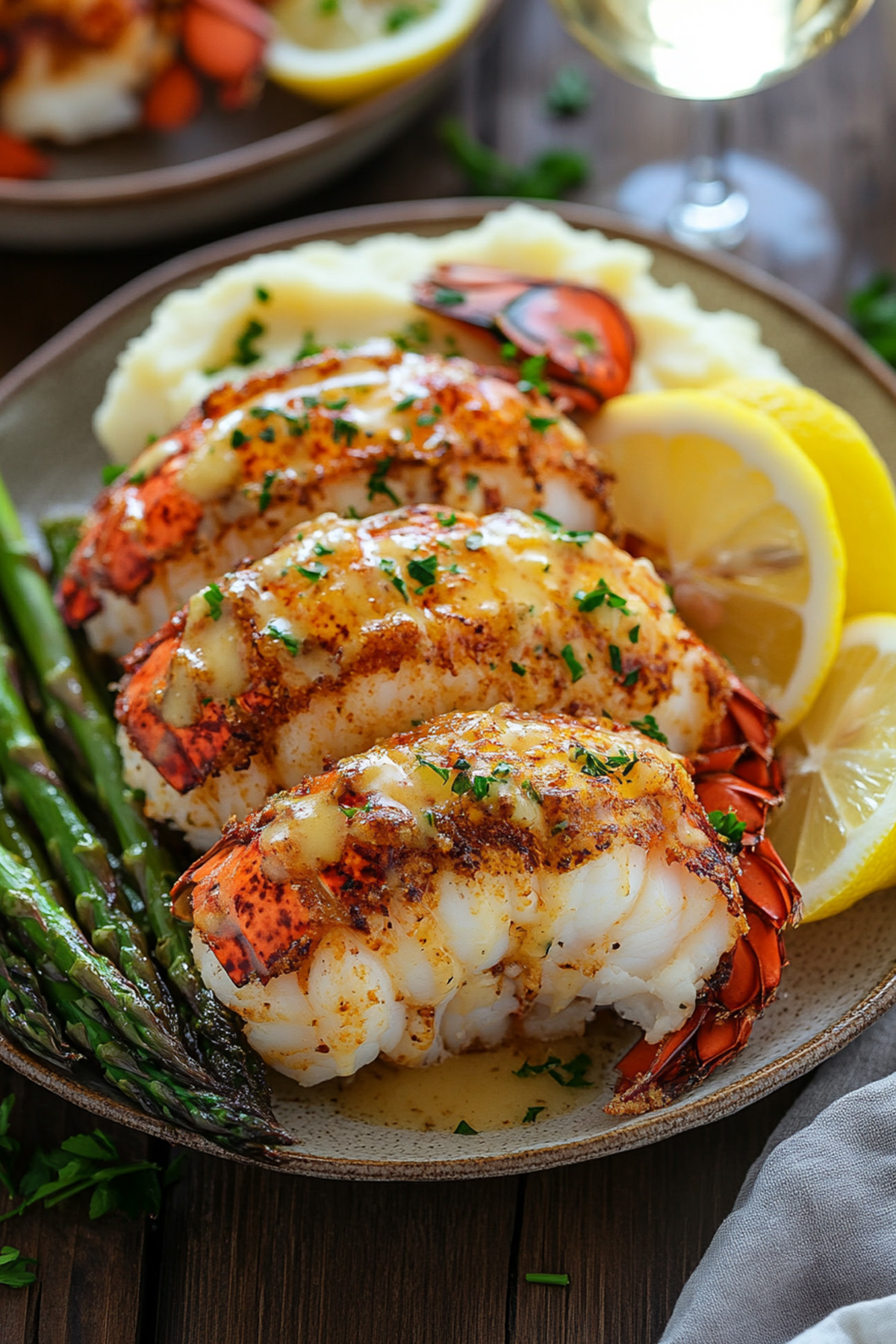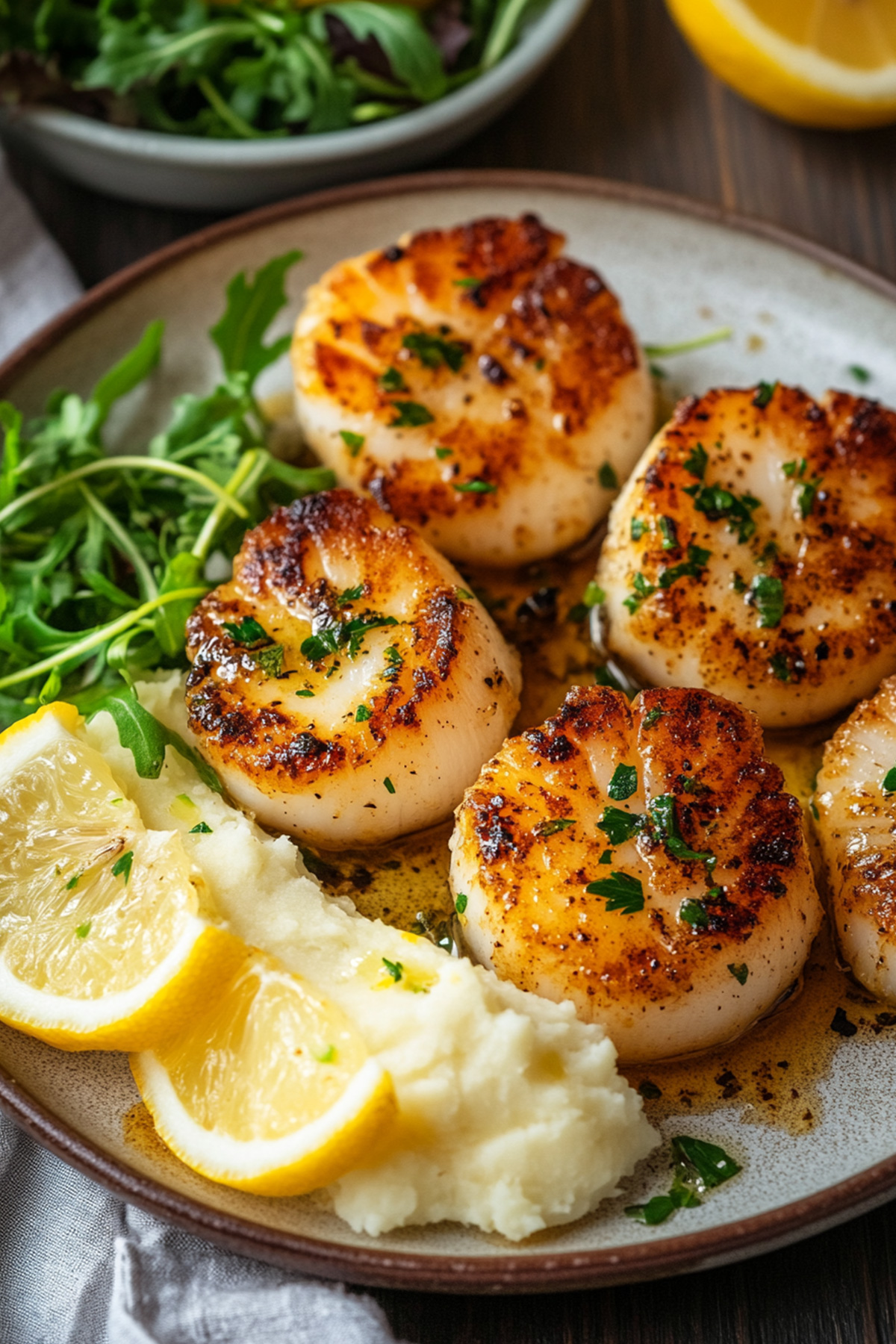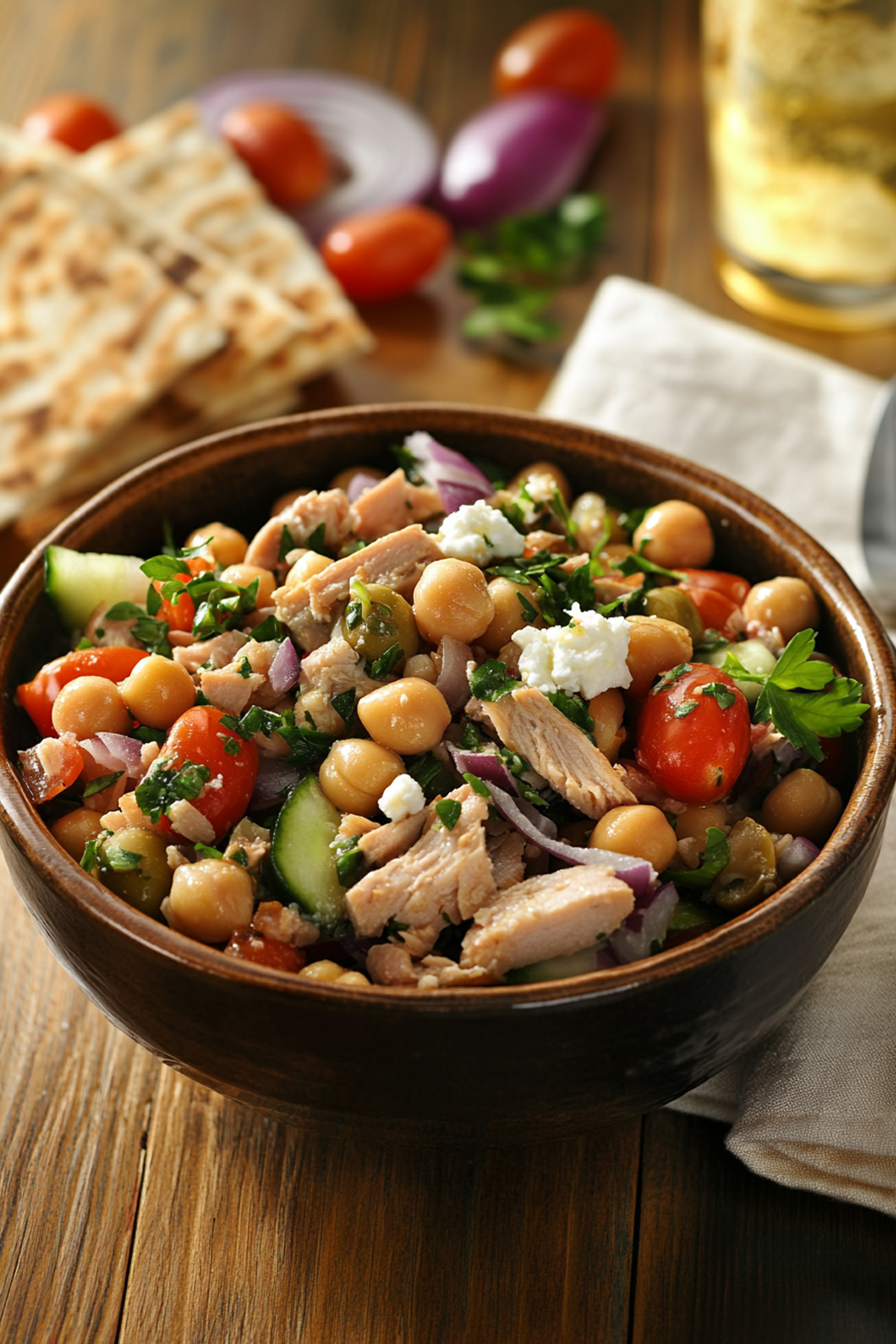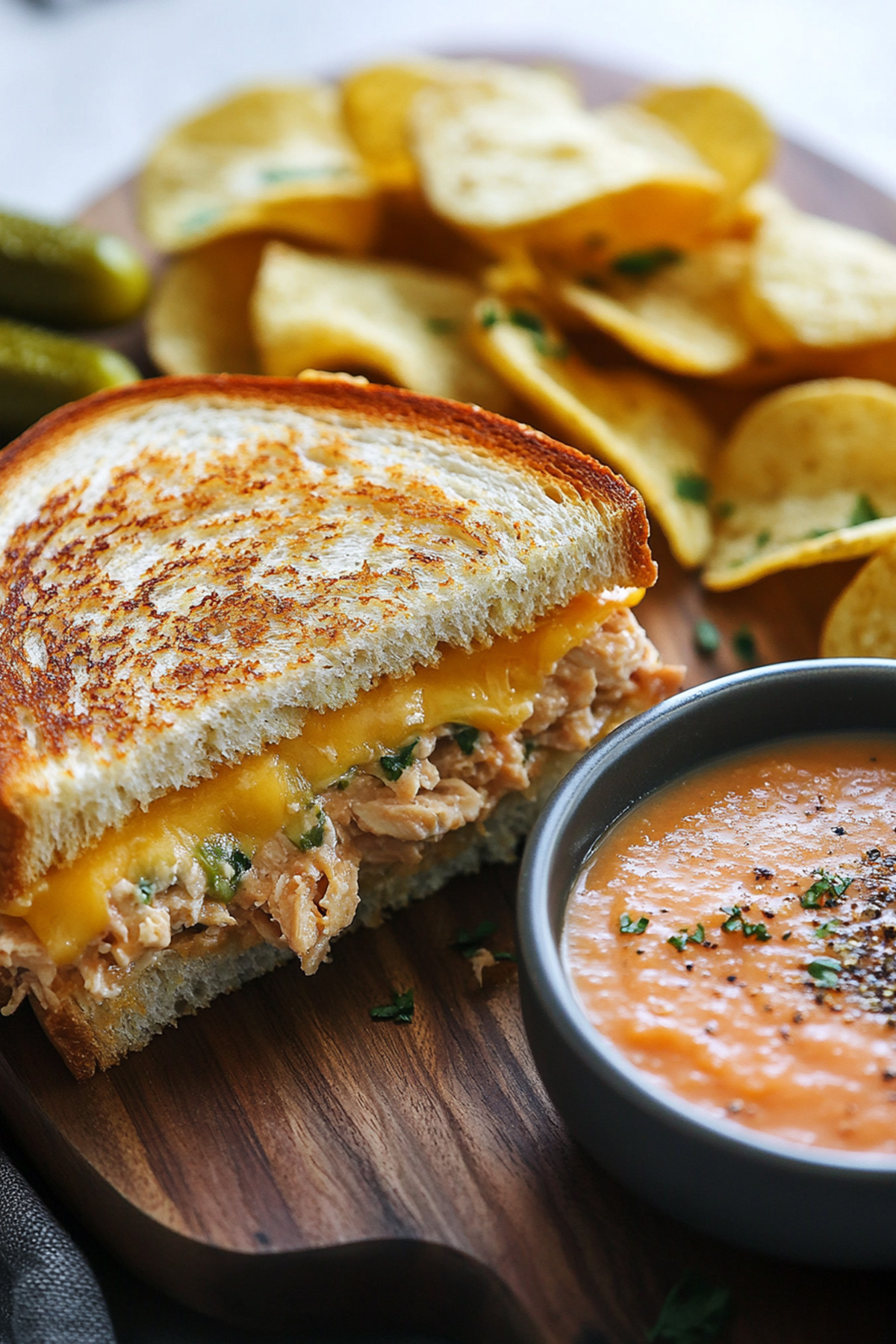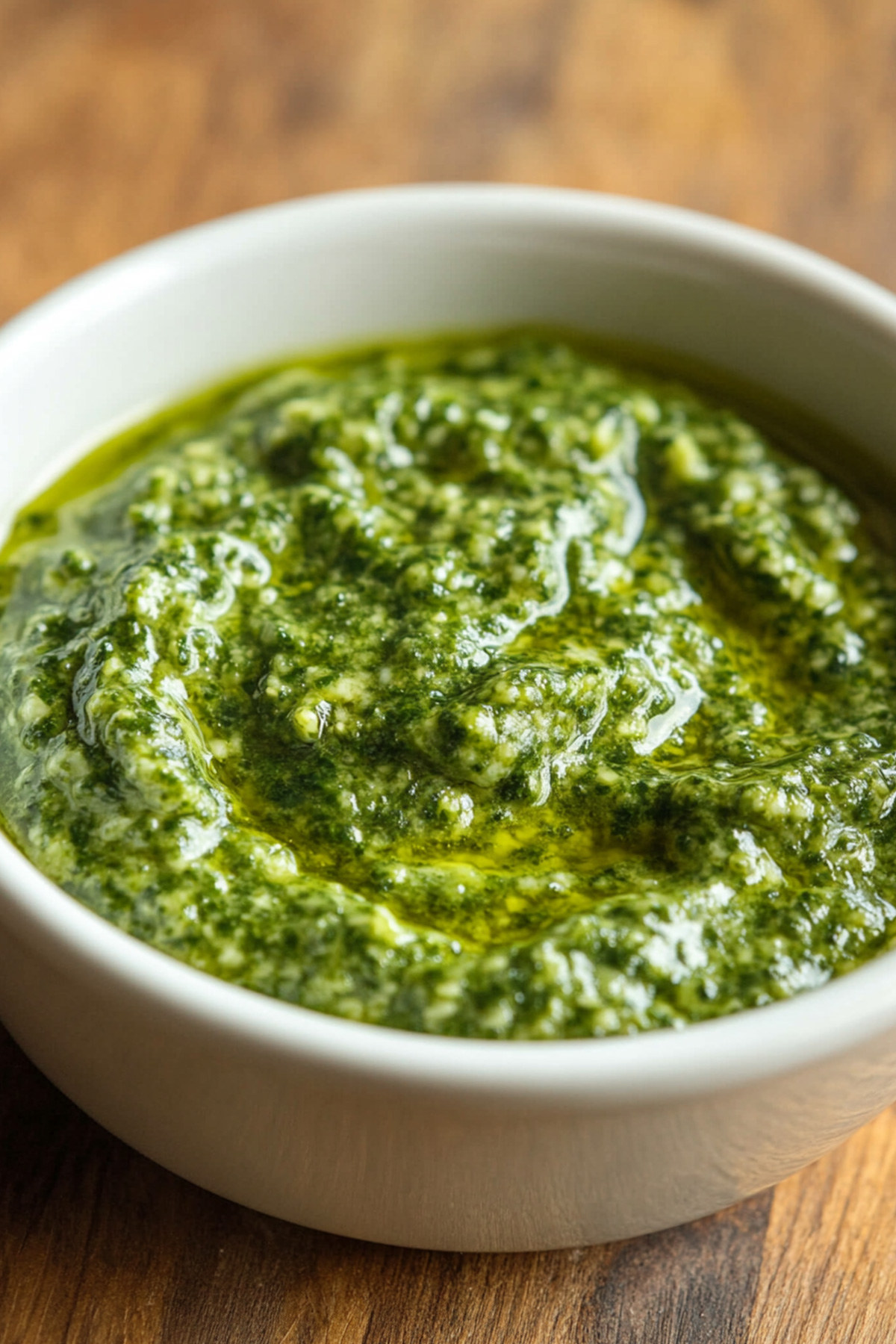Disclosure: As an Amazon Associate and participant in other affiliate programs, we earn from qualifying purchases. We only recommend products we believe will provide value to our readers.
Restaurant-style Chinese fried fish stands out with its perfect golden-brown crust that stays crispy long after leaving the kitchen. The signature crispiness and tender, flaky fish inside make this beloved dish more challenging to prepare than it seems.
Home cooks often struggle to achieve restaurant-quality Chinese fish filets. Their attempts usually result in soggy coating or overcooked fish. The right techniques make all the difference when you crave salt and pepper fish or a classic Chinese fish fry. This detailed guide shows you how to create perfectly crispy Chinese fried fish at home. You will learn everything from ingredient selection to proper frying temperature control.
Table of Contents
What Makes Chinese Fried Fish Special
Chinese fried fish stands out among other preparations because of its unique blend of techniques and traditions. The secret lies in a distinctive seasoning approach – “salt and pepper” in Chinese cooking delivers something completely different from Western interpretations. Chinese fried fish features white pepper instead of black pepper that brings a more subtle, woody flavor profile.
The perfect balance of textures and flavors makes Chinese fried fish special. A cornstarch coating creates signature light, crispy edges while the fish’s natural tenderness remains intact. This delicate balance goes beyond just coating – it depends on your ability to control heat and timing.
The right oil selection makes a big difference in Chinese fried fish. These oils work best to achieve that perfect crisp:
- Corn oil
- Peanut oil
- Vegetable oil
- Canola oil
These refined oils are vital because their higher smoke points prevent bitter flavors or harmful compounds that often come from lower-quality oils.
The cooking process itself is a skill you need to master. Patience plays a significant role – the fish’s delicate crust can break if moved too early. You can achieve that restaurant-quality finish by letting the crust develop without disturbance.
The sort of thing I love about Chinese fried fish is its regional variations. Some traditions prefer a simple salted approach with scalloped skin, while others use cornstarch coating for extra crispiness. Both methods work well, and your choice might depend on whether you want a traditional or modern take.
Chinese fried fish shines through its simplicity – minimal seasonings let the fish’s natural flavor take center stage. This creates a sophisticated yet approachable dish that fits perfectly anywhere from casual dinners to festive celebrations.
Selecting the Perfect Fish for Chinese Frying
Selecting the right fish makes up half the battle in creating the perfect Chinese fried fish. You need fish with firm, white meat that can withstand the high heat of frying.
Chinese fish frying offers plenty of excellent options. These fish varieties will give you fantastic results:
- Saltwater options: seabass, lingcod, snapper, grouper, cobia, or porgy
- Freshwater choices: catfish, large walleye, burbot, big bass
Porgies (also known as bream or scup) work exceptionally well with Chinese frying techniques. Their silvery appearance and firm, white meat makes them a versatile choice for various cooking methods.
Size plays an important role in the preparation process. The optimal results come from cutting the fish into 1-inch filets. The preparation requires some work before cutting begins. A small knife helps remove scales if your fish hasn’t been descaled. The tail and fins need trimming to create a cleaner presentation.
A good rinse in cold water follows the original prep work. This step ensures complete scale removal and clean edges. Such attention to detail helps achieve that restaurant-quality finish you want.
The fish’s freshness is a vital part of your final dish. Chinese cooking embraces the concept of “swimming fish” – the freshest possible option. While steamed preparations benefit from this level of freshness, frying focuses more on the fish’s texture and firmness.
Read also: Mahi Mahi Fried Fish
Essential Equipment for Chinese Fish Frying
The right kitchen equipment makes a huge difference in creating perfect Chinese fried fish at home. Let’s tuck into the tools you need to succeed.
Your biggest choice will be between a wok or a specialized fish frying pan. A wok is like the Swiss Army knife of Asian cooking. Its high walls and quick heating properties create that crispy finish you want. A small saucepan works just as well if you have limited space or oil.
A dedicated fish frying pan should have these features:
- Long, oval shape to accommodate whole fish
- Deeper walls than regular frying pans
- Dual riveted handles for secure grip
- Ventilation features to maintain crispiness
Heat conductivity should guide your material choice. The best fish frying pans are made from:
- Stainless steel
- Cast iron
- Aluminum
Temperature control is vital to get perfect results. Pre-heat your wok over medium-high heat before adding oil. This keeps the fish from sticking and makes it look beautiful. Deep frying needs an original temperature of 300°F (149°C) for the first fry. Raise it to 400°F (205°C) for the second fry.
Here’s a pro tip: No thermometer? Use the wooden chopstick test. Small bubbles forming around a wooden chopstick in the oil mean you’re ready to start frying.
Note that you need a deep vessel to prevent oil splatter. A shallow wok won’t do – high walls keep hot oil contained. Neutral, refined options like corn oil or vegetable oil work best. Their higher smoke points handle the high temperatures needed in Chinese fish frying.
Your equipment should be well-balanced and light. This helps you flip the fish and adjust oil distribution easily.
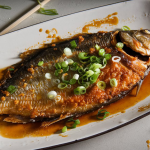
Chinese Fried Fish
- Total Time: 1 hour 5 minutes
Description
Want to make amazing Chinese fried fish at home? This recipe combines traditional Chinese flavors with modern techniques that will give you restaurant-quality results in your kitchen.
This Indo-Chinese style fish recipe gives you the perfect balance of crispy exterior and tender interior. The magic happens through a two-part cooking process – you’ll get that golden crunch first, then coat it in a flavorful sauce that makes your taste buds dance.
Ingredients
To prepare the Fish:
- 1 lb fish (whole or filets)
- ½ tsp turmeric powder
- Salt to taste
- 1 tbsp lemon juice
- ¼ cup oil for frying
To make the Sauce:
- 2 tbsp oil
- 1 tbsp finely chopped ginger
- 1 tbsp finely chopped garlic
- 1 finely chopped green chili
- 1 medium onion, finely chopped
- 2 tsp chili powder
- 1 tsp soy sauce
- 3 tbsp tomato ketchup
- 1 tsp vinegar
- 1 tsp freshly ground black pepper
- Handful of spring onions
- ½ cup water
Instructions
- Clean your fish really well and make deep slashes on both sides. Make sure to pat it completely dry.
- Mix turmeric powder, salt, and lemon juice. Rub this marinade all over the fish and let it rest for 30 minutes.
- Heat oil to 375°F. This temperature helps you achieve that perfect crispy exterior.
- Cook the fish for about 5 minutes on each side until you get a golden and crispy skin.
- Start the sauce by heating 2 tablespoons of oil and sauté ginger, garlic, chilies, and onions until golden.
- Add chili powder, soy sauce, ketchup, and vinegar. Mix everything well and cook until combined.
- Pour in water, bring to a boil, then add the fried fish to the sauce.
- Spoon the sauce over the fish until it thickens slightly, then add black pepper and spring onions.
Notes
- Temperature Control: Keep oil at 375°F to avoid greasy fish.
- Coating Tip: Make sure cornstarch coating sticks well before frying.
- Fish Selection: Firm white fish works best.
- Prep Time: 20 minutes
- Marination Time: 30 minutes
- Cook Time: 15 minutes
- Category: Seafood
- Method: Frying
Common Mistakes to Avoid When Making Chinese Fried Fish
Let’s talk about common pitfalls that can turn your Chinese fried fish adventure into a kitchen disaster. We’ve all been there. Knowing what not to do matters just as much as knowing what to do.
The biggest mistake happens before you start cooking. Fish preparation is vital. You need to pat your fish completely dry with a kitchen towel after washing it. Skip this step and you’re asking for trouble. Wet fish causes oil splatter and won’t give you that crispy texture you want.
Here are the most common mistakes that can ruin your Chinese fried fish:
- Moving or flipping the fish too early (wait at least 1.5-2 minutes before flipping)
- Not reaching the proper oil temperature (needs to reach smoking point, 180-200 degrees)
- Repeatedly flipping the fish instead of letting it form a crust
- Using a non-stick wok for high-temperature cooking
- Not preparing ingredients in advance (mise en place)
The coating process confuses many home cooks. Some prefer no coating to get pure flavor. You have several options: a thin layer of flour, cornstarch, or egg yolk. These coatings protect your fish and reduce oil splatter.
Temperature control is a vital factor. You might want to lower the heat when you see smoking oil, but don’t worry too much about adjusting it during frying. Note that the oil temperature must be higher when you remove the fish to force out excess oil.
Professional chefs use a technique called the ‘wok clock’ – they arrange all ingredients in order before cooking. This prevents the common mistake of throwing ingredients into the pan before you’re ready.
That sizzling sound tells you you’re on the right track. If you don’t hear it while cooking, you’re not stir-frying – you’re stir-boiling. The sizzle means you’re closer to achieving that perfect crispy Chinese fried fish.
The Science Behind Crispy Chinese Fried Fish
The science behind creating that perfect crispy Chinese fish captivates many home cooks. Let’s take a closer look at the transformation that happens when fish meets hot oil.
Frying resembles a delicate dance between heat and moisture. Your fish entering hot oil sets off a complex process called heat and mass transfer equilibrium. Oil seeps into the fish while water escapes into the oil, which creates those exciting bubbles.
The signature crispiness depends heavily on your coating choice. Flour produces a softer crust, but potato starch emerges as the real champion. The secret lies in its amylose content. Potato starch molecules lock into place when they hit hot oil, which creates that brittle, crunchy texture you desire.
Temperature control is a vital part of this scientific process. The stages unfold like this:
- Initial contact (170-180°C): Creates the optimal temperature for physical and sensory properties
- Surface boiling stage: Water evaporates, which creates bubbles
- Falling rate stage: Moisture content decreases
- Bubble end point stage: Final crispiness develops
The fish dries out when you fry it at too low a temperature. Long cooking at low heat allows juices to escape from the fish. High-heat frying quickly tightens the cornstarch crust and locks in those precious juices.
Your fish undergoes several chemical reactions simultaneously during frying:
- Protein denaturation (changing the protein structure)
- Maillard reaction (creating that golden-brown color)
- Starch gelatinization (expanding starch particles)
- Hydrolysis and oxidation of oils
The sort of thing I love about this process? Those bubbles come from more than just escaping water – they result from increased surface contact between air and oil. This interaction helps develop that perfect texture.
Temperature Sweet Spot: Frying at 170-180°C for about 3 minutes delivers the best physical and sensory properties. This combination creates that restaurant-quality finish everyone wants.
Tips for Achieving the Perfect Crispy Chinese Fish Filet
Want to become skilled at making crispy Chinese fish? This piece will help you achieve that perfect crunch every time. These game-changing tips will change the way you cook.
Preparation is key. Get everything ready before heating the oil. The cooking moves fast, so having your mise en place ready is vital.
These prep steps will give you perfect results:
- Pat your fish filets completely dry with paper towels
- Cut pieces evenly to cook consistently
- Remove skin from filets if present
- Have your thermometer ready to monitor temperature
- Prepare a wire rack or paper-towel-lined plate to drain
Temperature control is your best friend during frying. The oil should stay at 375°F or your fish will turn greasy. Using cake flour in your batter creates a substantially lighter coating.
Restaurant-quality fish stands out because of the double-frying technique. The second fry needs a higher temperature of 400°F – just keep it under a minute. This extra step gives you a longer-lasting crunch.
Patience plays a vital role during frying. Let your fish sit in the oil for 20-30 seconds without moving it. This wait helps the coating set properly and creates that perfect crispy exterior.
Many cooks make the mistake of overcrowding the pan. Small batch frying maintains oil temperature and gives space for a golden crust to develop. Fish pieces shouldn’t be too small because they might break apart while frying.
The final touch matters as much as cooking. Drain your fish on a wire rack instead of paper towels. This simple change keeps that coveted crispiness intact.
Popular Chinese Fried Fish Variations
Let’s take a closer look at the exciting world of Chinese fish preparations. Each region brings its own unique twist to the table. These variations show the versatility of Chinese fish cooking.
Salt & Pepper Fish ranks among the most popular variations and delivers an amazing textural experience. The Chinese version differs from Western salt and pepper seasonings by using white pepper. This creates a more subtle and woody flavor profile that enhances the fish’s taste.
Sweet and Sour Fish shines as a festive favorite, especially during Chinese New Year celebrations. Traditional recipes call for whole river fish, but modern adaptations make this dish more available for home cooking. The fish gets scored, battered, and deep-fried until it looks like a beautiful blossom. A tangy sweet and sour sauce completes the dish.
Fish selection plays a crucial role in each variation. Catfish stands out as chefs’ top pick for sweet and sour preparations. Seabass, perch, trout, and snapper also work great in these dishes.
The porgy (also known as bream or scup) deserves special attention. Its silvery appearance and firm, white meat make it perfect for Chinese frying techniques. You can cook it whole or as filets, which suits both traditional and modern interpretations.
Chinese fried fish shows remarkable adaptability in serving styles. Some restaurants create elaborate presentations with whole fish. Modern interpretations often use filets to make the dish easier to serve without losing flavor. This practical approach has made Chinese fried fish a hit in home kitchens.
Fresh filets are essential for success with any of these variations. Firm fish varieties deliver perfect texture every time, but avoid delicate fish like cod that tend to fall apart during cooking.
You may like: Greek Fried Fish Recipe
Serving and Presentation Guidelines
Your perfectly cooked Chinese fried fish can become a feast that delights both eyes and taste buds with these serving ideas. The right presentation will raise your dish from delicious to memorable.
A crispy fish needs the perfect foundation to shine. A large oval platter makes an ideal stage to showcase both your main dish and garnishes.
The side dish options are endless and exciting:
- Classic accompaniments like crispy onion rings or French fries
- Lighter options such as sautéed zucchini or green beans
- Asian-inspired sides like dill and chive peas
- Hearty additions such as macaroni and cheese or cornbread
Temperature matters with Chinese fried fish. A wire rack works best after frying instead of placing it directly on a plate. This keeps the bottom crispy and maintains that perfect crunch.
Sauces and condiments can go beyond the ordinary. Tartar sauce works well, but Asian-inspired options add excitement. Calamansi Soy Sauce (Toyomansi) brings a bright, citrusy kick that pairs perfectly with crispy fish.
Your plate needs color and contrast. Grilled or roasted vegetable skewers add visual appeal and nutrition. A cool, crisp coleslaw or an Asian-style potato salad with apple cubes and cucumber creates a refreshing balance.
Pro Tip: Small bowls of sides arranged around the main platter create an impressive family-style presentation. This setup lets guests customize their plates easily.
Rice or noodles round out the meal perfectly. White rice, brown rice, or cheesy cauliflower rice help balance your fish’s crispy texture. Fresh herbs or green onions add that final professional touch.
Read also: Escovitch Fish Recipe
Health Benefits of Chinese Fried Fish
Chinese fried fish not only tastes delicious with its crispy texture but also brings surprising health benefits to your table. You might think fried foods can’t be healthy, but traditional Chinese cooking methods actually provide some unique advantages to your wellbeing.
Traditional Chinese fish preparation will give a surprisingly heart-healthy dish. Chinese cooking typically uses minimal amounts of oil, which creates dishes with less saturated fat and cholesterol. This method helps maintain heart health while still delivering that satisfying crunch you love.
Your immune system benefits too. Common ingredients in Chinese fish preparations, like shiitake mushrooms, contain beta-glucans that boost immune system function. Adding garlic and ginger to your Chinese fried fish provides natural antimicrobial and anti-inflammatory benefits.
Here’s what you’ll find in a typical serving of Chinese fried fish:
- 16g of high-quality protein
- Only 90 calories per serving
- Essential vitamins and minerals
- 22% of daily omega-3 fatty acids
- 130% of recommended daily vitamin B12
Digestive Health Benefits: Fresh ingredients and aromatic spices in Chinese cuisine support healthy digestion. Ginger, a common ingredient in Chinese fish dishes, helps reduce digestive discomfort. The balanced mix of ingredients will give a meal that’s not just tasty but also gentle on your stomach.
Making Chinese fried fish at home lets you control its health benefits better. Shallow frying instead of deep frying makes a healthier choice. This cooking method reduces food waste while keeping the nutritional benefits intact.
If you have weight concerns, Chinese cuisine’s focus on whole foods and lean proteins makes it an excellent choice. Chinese fish preparation techniques create dishes that satisfy yet contain fewer calories than Western alternatives. The high fiber content from accompanying vegetables promotes feelings of fullness and prevents overeating.
Note that fish itself packs incredible nutrition – it’s included in the Dietary Guidelines for Americans, which recommend adults eat at least 8 ounces of fish weekly. Chinese-style preparation adds extra health benefits through traditional cooking wisdom and beneficial ingredients.
References:
– Nutritionix
– uniteddumplings
Nutritional Information
The nutritional content of your favorite Chinese fried fish can help you plan your meals better and control your portions. Let’s look at what goes into each tasty bite.
A standard serving (87g) of Chinese fried fish filet contains 199 calories. The macronutrient breakdown of your dish includes:
- Total Fat: 12g (15% Daily Value)
- Protein: 16g
- Total Carbohydrates: 7g (3% Daily Value)
The fat content breaks down into a balanced mix of:
- Saturated Fat: 2.9g
- Polyunsaturated Fat: 2.9g
- Monounsaturated Fat: 4.9g
Your Chinese fried fish delivers an impressive range of essential minerals. Each serving gives you 38mg of calcium (3% DV), 1.2mg of iron (7% DV), and 295.8mg of potassium (6% DV). These minerals are vital to your bone health, oxygen transport, and muscle function.
The sodium content in a serving is 244mg, which stays moderate compared to other prepared dishes. You’ll find 62mg of cholesterol (21% DV) in each serving.
The protein distribution in Chinese fried fish makes it a standout choice. A typical serving gives you about 31% carbs, 51% fat, and 18% protein. This combination fits well into different dietary plans.
The traditional Chinese frying method keeps reasonable calorie levels while giving you that satisfying crunch. A tablespoon (10g) has just 30 calories, with a mix of 61% carbs, 27% fat, and 12% protein.
Note that these values might change based on your cooking method and fish choice. Making Chinese fried fish at home lets you control these nutritional aspects while getting that restaurant-quality taste.
Read also: Mojarra Frita Mexican Fried Fish Recipe
Storage and Reheating
Chinese fried fish makes amazing leftovers when you store and reheat them correctly. The right technique preserves that perfect crunch instead of leaving you with a soggy disappointment.
Your leftover Chinese fried fish stays fresh in the refrigerator 3 to 4 days with proper storage. These steps help maintain its quality:
- Store in an airtight container within two hours of cooking
- Set your refrigerator temperature at or below 40°F (4°C)
- Place fish on a cooling rack that allows good ventilation
- Use paper towels to absorb excess moisture
- Keep pieces separate to prevent sogginess
The right reheating method brings back that crispy texture. These options work best, ranked from top to bottom:
- Oven Method (15-20 minutes):
- Preheat to 350°F
- Place fish on an oven-safe baking sheet
- Heat for 10-15 minutes until internal temperature hits 145°F
- Air Fryer Method (6-8 minutes):
- Preheat to 320°F
- Cook 3-4 minutes per side
- Skillet Method (5-6 minutes):
- Heat on high
- Add a small amount of oil
- Cook 2-3 minutes per side
A helpful tip: thaw frozen fish gradually in the refrigerator overnight. Short on time? Seal it in a plastic bag and submerge it in cold water for faster thawing.
Freezing can extend your fish’s life, though it might affect the texture. Wrap individual pieces in plastic wrap and store them in an airtight container. Frozen fish stays safe indefinitely at 0°F (-18°C), but tastes best within 3-8 months.
The microwave ruins that crispy texture you worked hard to achieve, so skip it unless you don’t mind soggy results. Rapid moisture release from high heat turns your crispy coating mushy.
Note that reheated fish must reach an internal temperature of 165°F (74°C) to be safe. Throw it out if you notice any strange smells or texture changes.
Read also: Filipino Tilapia Fillet Recipe
Conclusion
The art and science of Chinese fried fish create a perfect golden-brown crust while maintaining tender, moist flesh inside. The right techniques, equipment, and ingredients will help you achieve restaurant-quality results at home.
Your success depends on mastering essential fundamentals. The right fish selection, temperature control, and careful preparation will elevate your cooking. These details ensure consistently crispy, flavorful results that match any professional kitchen’s standards.
Practice guides you toward perfection naturally. Your understanding of timing, temperature, and technique will improve with each preparation. This Chinese fried fish recipe will soon become your signature dish that impresses family and friends with its balanced textures and flavors.

